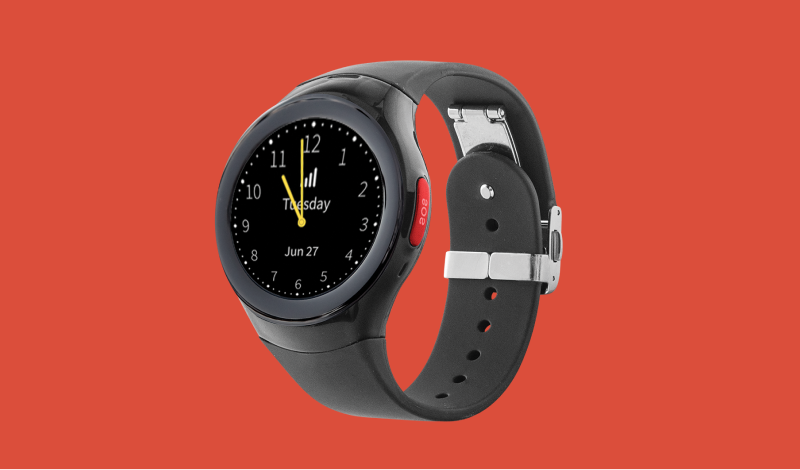Does Medicare Cover Walkers? What You Need To Know
As we grow older, staying mobile becomes essential for maintaining independence and quality of life. For many older adults, a walker offers critical support—helping prevent falls and making everyday movement easier and safer.
Whether you’ve already started using a walker or your doctor recently recommended one, you may be exploring your options, including what it might cost and whether Medicare can help.
If you’re a Medicare beneficiary, here’s some good news: Yes, Medicare does cover walkers—but only under certain conditions. Like many aspects of Medicare, there are specific requirements and steps you need to follow in order to qualify.

In this guide, we’ll break down how Medicare coverage for walkers works, what types of walkers are eligible, and what you’ll need to do to ensure your walker is covered.
What Does Medicare Require for Walker Coverage?
Medicare doesn’t automatically cover every mobility aid—it must be considered a medically necessary piece of durable medical equipment (DME). Walkers generally fall into this category under Medicare Part B, which covers medical equipment for use at home when prescribed by a doctor.
To qualify for Medicare coverage, you must meet the following requirements:
- Medical Necessity
Your doctor must determine that a walker is medically necessary to help you safely move around your home. This determination must be made by a physician who is enrolled in Medicare. - In-Person Examination
A face-to-face visit with your doctor is required before Medicare will approve coverage. This appointment allows your physician to assess your mobility needs and document the necessity of a walker. Telehealth or phone visits usually don’t meet this requirement. - Written Prescription
Your doctor must write a prescription that includes the type of walker you need and any specific features it should have. This documentation helps ensure that the equipment meets your medical needs. - Medicare-Approved Supplier
Finally, you’ll need to obtain your walker from a supplier who participates in the Medicare program. Medicare will only pay for equipment provided by suppliers who are officially enrolled and approved.
What Types of Walkers are Covered?

Medicare covers various types of walkers to meet the diverse needs of beneficiaries. It’s important to note, though, that not all walkers meet the needs of everyone. Your provider will prescribe the type that will best suit your needs. The covered types include:
- Standard Walker: A basic walker with four legs and no wheels, providing stable support.
- Two-Wheeled Walker: Similar to a standard walker but equipped with two wheels on the front legs, making it easier to move.
- Rollator: A walker with four wheels, handlebars, and a built-in seat for resting. Some rollators also have brakes for added safety.
- Knee Walker: Designed for individuals with lower leg injuries, a knee walker allows the user to rest the injured leg on a padded cushion while propelling themselves with the other leg.
- Hemi Walker: Ideal for users who need more support on one side of their body, a hemi walker has a design that offers support on only one side.
It’s essential to discuss with your doctor which type of walker best suits your needs before obtaining one.
Ready to learn more about the different types of walkers? Read our helpful guide on the Best Walkers for Seniors.
How Much Does Medicare Cover for a Walker?
Medicare typically covers 80% of the cost of a walker if it’s deemed medically necessary, leaving you responsible for the remaining 20%, as long as you’ve met your Part B deductible, which is $240 in 2024.

The exact amount you’ll pay depends on the type of walker you need and whether you rent or purchase it. Some walkers are more expensive due to additional features, so it’s important to choose one that fits both your health needs and your budget.
If you have extra coverage through a Medigap (Medicare Supplement Insurance) plan or a Medicare Advantage plan, these may help cover all or part of your out-of-pocket costs.
How to Get a Walker Covered by Medicare
- Start with a Doctor’s Visit
Schedule an appointment with your doctor to discuss your mobility concerns. If your doctor decides a walker is medically necessary, they’ll need to be enrolled in Medicare for the process to be covered—ask their office if you’re unsure. - Obtain a Prescription
Your doctor will write a prescription specifying the type of walker and any features you require. - Choose a Medicare-Approved Supplier
Medicare only covers walkers purchased or rented from suppliers that participate in the Medicare program. Your doctor’s office can help you find one if needed. - Submit the Prescription
Give the prescription to the approved supplier, who will handle the Medicare paperwork and file a claim on your behalf. - Cover Your Share of the Cost
After Medicare pays its share, you’ll owe the remaining 20% of the cost, along with any unpaid portion of your annual Part B deductible.
What If I’ve Already Bought a Walker?
In some instances, individuals may purchase a walker before realizing that Medicare coverage is available. If you find yourself in this situation, you may still be eligible for reimbursement. Remember, if you purchased a walker that is not the type your physician prescribed, you might not be able to receive reimbursement at all.
To seek reimbursement, follow these steps:
- Gather Documentation: Collect all relevant documentation, including the written prescription from your doctor, the receipt for the walker, and any other supporting documents.
- Complete a Medicare Claim Form: Obtain and complete a Medicare Claim Form (CMS-1490S). You can download this form from the official Medicare website or request it from your Medicare Administrative Contractor (MAC).
- Submit the Claim Form: Mail the completed claim form along with all supporting documentation to your MAC. Be sure to keep copies for your records.
- Wait for Processing: Once your claim is submitted, Medicare will process it, and if approved, you will receive reimbursement for the eligible amount.
What If I Need to Replace My Walker?
If your walker becomes damaged, lost, or you need to upgrade to a different type, Medicare may cover a replacement.
However, certain conditions must be met:
- Medical Necessity: Your doctor must confirm the medical necessity of a replacement walker.
- Face-to-Face Examination: An additional face-to-face examination with your doctor may be required to assess your current mobility needs.
- New Written Prescription: Obtain a new written prescription specifying the need for a replacement walker.
- Follow the Same Steps: Follow the same steps outlined earlier for getting a walker covered by Medicare, including choosing a Medicare-approved supplier and submitting the necessary documentation.
It’s important to note that Medicare may not cover a replacement walker if the need for a new one arises primarily due to wear and tear. The medical necessity must be clearly established.
Conclusion
Medicare does cover the cost of walkers for eligible beneficiaries, provided the necessary requirements are met. Understanding the criteria, types of walkers covered, and the financial aspects of Medicare coverage for walkers is essential for seniors seeking to maintain their mobility and independence.
By following the outlined steps and working closely with healthcare professionals, beneficiaries can navigate the process of obtaining and, if needed, replacing walkers with the support of Medicare.















